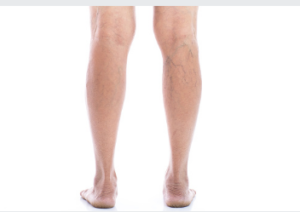Varicose vein removal options range from surgical stripping to more modern treatments such as endovenous laser therapy (EVLT) or radiofrequency ablation, depending on which approach best meets your needs. Your doctor will advise which option would work for you.
 Ambulatory Phlebectomy
Ambulatory Phlebectomy
Ambulatory phlebectomy is an outpatient varicose vein removal South Australia procedure to extract varicose vein clusters that lie close to the skin’s surface. This minimally invasive surgical technique relies on local anesthesia for effective results; patients should expect temporary bruising and swelling after their procedure. However, any discomfort should subside quickly with compression stockings worn as directed to reduce pain and swelling.
Once cleansed and anesthetised, your varicose vein removal South Australia doctor will make a series of tiny incisions no more significant than pencil erasers around your varicose vein. Next, they’ll insert a hook-like tool, carefully pull out affected veins using forceps or pullers and secure the most proximal end with absorbable sutures to complete treatment.
Varicose veins form when the walls of your veins weaken and allow blood to freely pass through, leading it to pool in your veins and cause them to stretch as blood is forced backward through weakened valves in your vein. When left alone for too long, varicose veins develop lumpy spots beneath the surface of your skin that evolve over time and eventually stretch even more, leading to further vein stretching. As they try further, they will also become lumpier over time until, finally, you will notice them from below the surface!
Your varicose veins’ weak valves and walls may eventually collapse and close off completely, redirecting blood flow away from them and towards more healthy veins in your body. It will both stop them from worsening while simultaneously improving health overall.
Radiofrequency Ablation
Radiofrequency ablation (RFA) is a non-surgical and minimally invasive varicose vein removal procedure used to treat large, deep varicose veins known as saphenous veins. RFA has become the gold standard treatment option for prominent varicose veins; it has proven safer and more effective than vein stripping surgery and requires less downtime for patients. In addition, RFA is Medicare rebateable, allowing individuals to reclaim part of the procedure’s costs from Medicare rebates.
Your leg will be numbed on a bed with anaesthetic medication before needle insertion into a diseased vein. A catheter containing an RF heat source will then be threaded through this hole into a diseased vein and used to deliver radiofrequency energy through it, heating its walls until they collapse and close off circulation to healthy veins, diverting blood flow toward them instead and improving overall circulation.
Endovenous Laser Ablation
Varicose veins are swollen, twisted blood vessels that protrude just below the skin’s surface and can lead to discomfort in legs and feet, itchy skin patches, skin discolourations and more. Your doctor can treat these abnormal vessels using minimally invasive endovenous laser ablation (EVLT).
Body cells rely on two systems of veins – superficial and deep – for proper blood circulation. EVLT targets diseased superficial veins to collapse and seal closed, diverting blood flow back towards healthier nearby veins while leaving behind dilatant, twisting vessels to disappear over time.
At your doctor’s office-based procedure, they’ll make a small incision and insert a catheter into the diseased vein, with local anesthetic administered around it to ease discomfort during treatment. They then guide it directly towards it using ultrasound imaging technology before using laser heating to close off and heat out its interior via heat energy; eventually, the affected vein will gradually vanish over several weeks.
Your everyday activities can usually resume immediately following treatment; however, for optimal vein healing results, you should limit movements like extended periods of standing, air travel and strenuous exercise in the treated leg for at least two weeks. Wear compression socks during recovery; post-procedure discomfort typically subsides quickly with over-the-counter painkillers like Tylenol.
VenaSeal®
Venaseal is an FDA-approved varicose vein treatment using medical adhesive to seal the abnormal great saphenous vein (GSV) closed. The procedure is quick and painless, as no anesthesia or heat source is used – meaning there’s no risk of nerve or skin injury during treatment; plus, patients can return to their regular activities without using compression stockings afterwards.
Specialists employ an injectable form of n-butyl-2-cyanoacrylate that will immediately seal off diseased GSV through ultrasound guidance using a catheter. This adhesive immediately closes off damaged varicose veins rerouting blood back through healthy veins; over time, your body will naturally reabsorb these gnarled, twisted segments.
